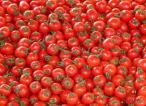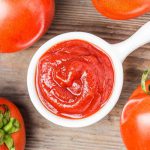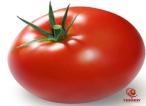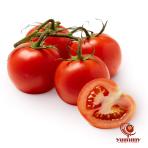Purchase and price of tomato paste in a jar types
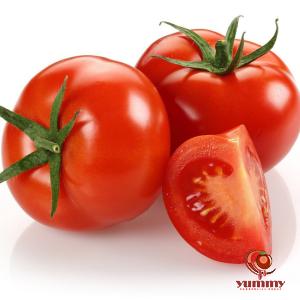
Tomato paste in a jar is a kitchen staple that brings depth, richness, and flavor to a wide range of dishes. Whether you are making a hearty pasta sauce, a savory stew, or a flavorful marinade, tomato paste adds a concentrated burst of umami that elevates the final dish. In this comprehensive guide, we will delve into the world of tomato paste in a jar, exploring its origins, production process, nutritional benefits, culinary uses, and much more.

.
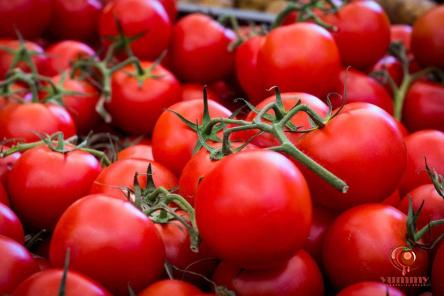 History and Origins: Tomatoes are believed to have originated in western South America and were brought to Europe by Spanish explorers in the 16th century. Tomato paste, on the other hand, is a concentrated form of tomatoes that has been cooked down and strained to remove seeds and skin. The process of making tomato paste dates back centuries and was traditionally done by slow-cooking tomatoes in open pots over a fire. Production Process: Today, commercial tomato paste production involves modern machinery and techniques to ensure consistency and quality. Ripe tomatoes are harvested and quickly processed to retain their freshness. The tomatoes are then washed, sorted, and crushed to extract the pulp. The pulp is then cooked down to reduce moisture content, resulting in a thick and concentrated paste. The paste is strained to remove any remaining seeds or skin and then packaged in jars for distribution. Nutritional Benefits: Tomato paste in a jar is a nutrient-dense ingredient that provides a range of essential vitamins and minerals. Tomatoes are rich in antioxidants such as lycopene, which is believed to have health benefits including reducing the risk of heart disease and certain types of cancer. Tomato paste is also a good source of vitamin C, potassium, and fiber. Additionally, the cooking process involved in making tomato paste helps to concentrate these nutrients, making them more bioavailable to the body. Culinary Uses: Tomato paste in a jar is a versatile ingredient that can be used in a wide variety of dishes.
History and Origins: Tomatoes are believed to have originated in western South America and were brought to Europe by Spanish explorers in the 16th century. Tomato paste, on the other hand, is a concentrated form of tomatoes that has been cooked down and strained to remove seeds and skin. The process of making tomato paste dates back centuries and was traditionally done by slow-cooking tomatoes in open pots over a fire. Production Process: Today, commercial tomato paste production involves modern machinery and techniques to ensure consistency and quality. Ripe tomatoes are harvested and quickly processed to retain their freshness. The tomatoes are then washed, sorted, and crushed to extract the pulp. The pulp is then cooked down to reduce moisture content, resulting in a thick and concentrated paste. The paste is strained to remove any remaining seeds or skin and then packaged in jars for distribution. Nutritional Benefits: Tomato paste in a jar is a nutrient-dense ingredient that provides a range of essential vitamins and minerals. Tomatoes are rich in antioxidants such as lycopene, which is believed to have health benefits including reducing the risk of heart disease and certain types of cancer. Tomato paste is also a good source of vitamin C, potassium, and fiber. Additionally, the cooking process involved in making tomato paste helps to concentrate these nutrients, making them more bioavailable to the body. Culinary Uses: Tomato paste in a jar is a versatile ingredient that can be used in a wide variety of dishes.
..
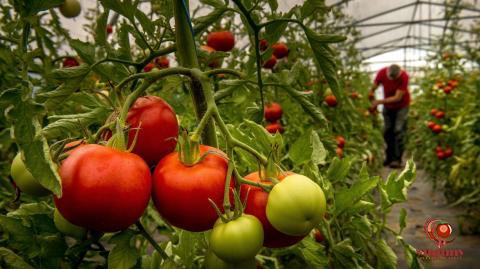 It serves as the flavor base for many sauces, soups, stews, and braises. Tomato paste can be added to sautéed onions and garlic to create a rich and savory foundation for pasta sauces. It can also be used to add depth and complexity to meat dishes such as chili, meatballs, and casseroles. Additionally, tomato paste can be diluted with broth or water to make a quick and flavorful tomato sauce for pizzas or as a base for soups. Storage and Shelf Life: One of the key advantages of tomato paste in a jar is its long shelf life. Unopened jars of tomato paste can be stored in a cool, dry place for up to two years. Once opened, tomato paste should be refrigerated and used within a week to maintain its freshness and flavor. If you find yourself with leftover tomato paste, consider freezing it in an ice cube tray for easy portioning and use in future recipes. Choosing the Right Tomato Paste: When selecting tomato paste in a jar, it’s important to consider the quality and concentration of the product. Look for tomato paste that is made from ripe, vine-ripened tomatoes for the best flavor. Additionally, check the ingredient list to ensure that the tomato paste does not contain any added sugars, preservatives, or artificial additives. Opt for organic or all-natural tomato paste whenever possible for a cleaner and more wholesome product. Tomato Paste vs. Tomato Sauce: It’s important to note the difference between tomato paste and tomato sauce. Tomato paste is a thick and concentrated product made from cooked-down tomatoes, while tomato sauce is a thinner and less concentrated product that often contains additional ingredients such as herbs, spices, and seasonings.
It serves as the flavor base for many sauces, soups, stews, and braises. Tomato paste can be added to sautéed onions and garlic to create a rich and savory foundation for pasta sauces. It can also be used to add depth and complexity to meat dishes such as chili, meatballs, and casseroles. Additionally, tomato paste can be diluted with broth or water to make a quick and flavorful tomato sauce for pizzas or as a base for soups. Storage and Shelf Life: One of the key advantages of tomato paste in a jar is its long shelf life. Unopened jars of tomato paste can be stored in a cool, dry place for up to two years. Once opened, tomato paste should be refrigerated and used within a week to maintain its freshness and flavor. If you find yourself with leftover tomato paste, consider freezing it in an ice cube tray for easy portioning and use in future recipes. Choosing the Right Tomato Paste: When selecting tomato paste in a jar, it’s important to consider the quality and concentration of the product. Look for tomato paste that is made from ripe, vine-ripened tomatoes for the best flavor. Additionally, check the ingredient list to ensure that the tomato paste does not contain any added sugars, preservatives, or artificial additives. Opt for organic or all-natural tomato paste whenever possible for a cleaner and more wholesome product. Tomato Paste vs. Tomato Sauce: It’s important to note the difference between tomato paste and tomato sauce. Tomato paste is a thick and concentrated product made from cooked-down tomatoes, while tomato sauce is a thinner and less concentrated product that often contains additional ingredients such as herbs, spices, and seasonings.
…
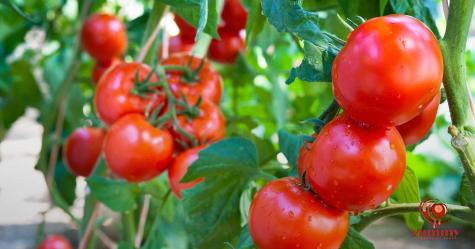 Tomato paste is used to add depth and intensity of flavor to dishes, while tomato sauce is often used as a base for pasta sauces or as a topping for pizzas. In conclusion, tomato paste in a jar is a culinary essential that should have a place in every kitchen. Its rich flavor, versatility, and nutrient density make it a valuable ingredient for home cooks and professional chefs alike. Whether you are simmering a pot of bolognese sauce, braising a batch of beef stew, or marinating a rack of ribs, tomato paste adds depth and complexity to your dishes. So next time you’re at the grocery store, pick up a jar of tomato paste and unleash the full potential of your cooking. Tips for Using Tomato Paste in a Jar: 1. **Sautéing**: One of the best ways to enhance the flavor of tomato paste is to sauté it in oil or butter before adding other ingredients. This helps to caramelize the sugars in the paste and deepen the flavor of your dish. 2. **Diluting**: If you find the flavor of tomato paste too intense, you can dilute it with broth, water, or wine to achieve the desired consistency and taste. This also allows the flavors of the other ingredients to shine through. 3. **Mixing**: For a quick and easy tomato sauce, mix tomato paste with canned diced tomatoes, garlic, herbs, and olive oil. Simmer the mixture for a few minutes to marry the flavors and create a delicious sauce for pasta or pizza. 4. **Marinating**: Tomato paste works well as a base for marinades for meats and vegetables. Combine tomato paste with vinegar, oil, garlic, and your favorite spices to create a flavorful marinade for grilling or roasting. 5. **Thickening**: Tomato paste can be used as a natural thickener for soups, stews, and sauces. Add a spoonful of tomato paste to your dish and simmer to achieve a velvety texture and rich taste.
Tomato paste is used to add depth and intensity of flavor to dishes, while tomato sauce is often used as a base for pasta sauces or as a topping for pizzas. In conclusion, tomato paste in a jar is a culinary essential that should have a place in every kitchen. Its rich flavor, versatility, and nutrient density make it a valuable ingredient for home cooks and professional chefs alike. Whether you are simmering a pot of bolognese sauce, braising a batch of beef stew, or marinating a rack of ribs, tomato paste adds depth and complexity to your dishes. So next time you’re at the grocery store, pick up a jar of tomato paste and unleash the full potential of your cooking. Tips for Using Tomato Paste in a Jar: 1. **Sautéing**: One of the best ways to enhance the flavor of tomato paste is to sauté it in oil or butter before adding other ingredients. This helps to caramelize the sugars in the paste and deepen the flavor of your dish. 2. **Diluting**: If you find the flavor of tomato paste too intense, you can dilute it with broth, water, or wine to achieve the desired consistency and taste. This also allows the flavors of the other ingredients to shine through. 3. **Mixing**: For a quick and easy tomato sauce, mix tomato paste with canned diced tomatoes, garlic, herbs, and olive oil. Simmer the mixture for a few minutes to marry the flavors and create a delicious sauce for pasta or pizza. 4. **Marinating**: Tomato paste works well as a base for marinades for meats and vegetables. Combine tomato paste with vinegar, oil, garlic, and your favorite spices to create a flavorful marinade for grilling or roasting. 5. **Thickening**: Tomato paste can be used as a natural thickener for soups, stews, and sauces. Add a spoonful of tomato paste to your dish and simmer to achieve a velvety texture and rich taste.


 Phone number:
Phone number:  WhatsApp Response:
WhatsApp Response:
